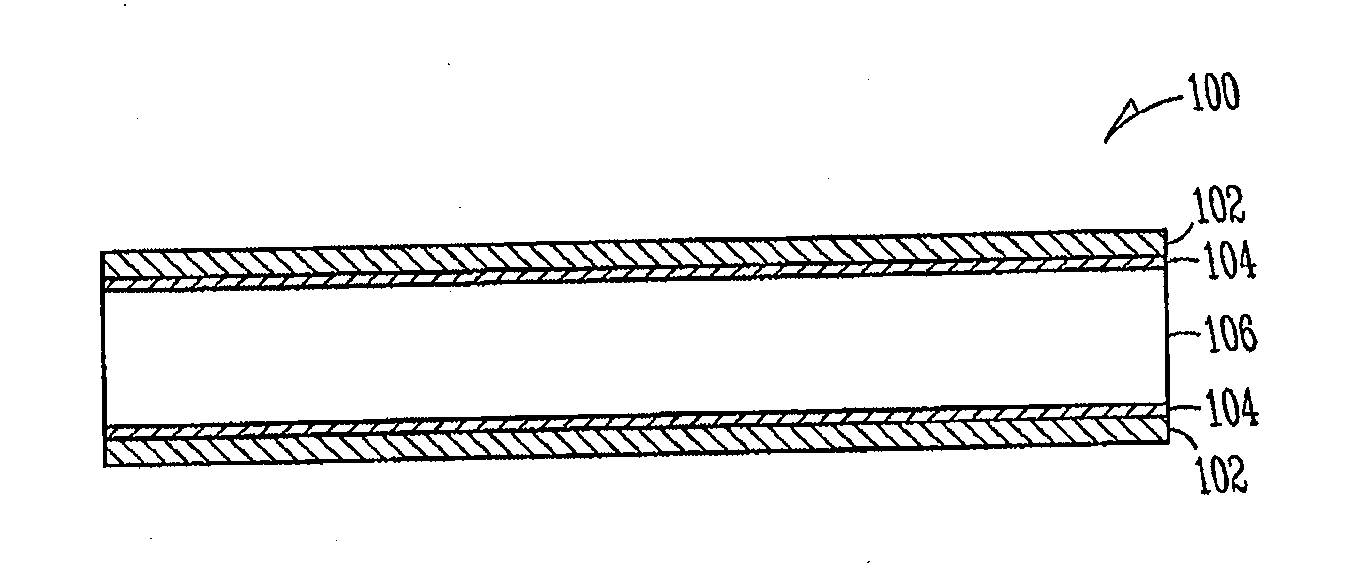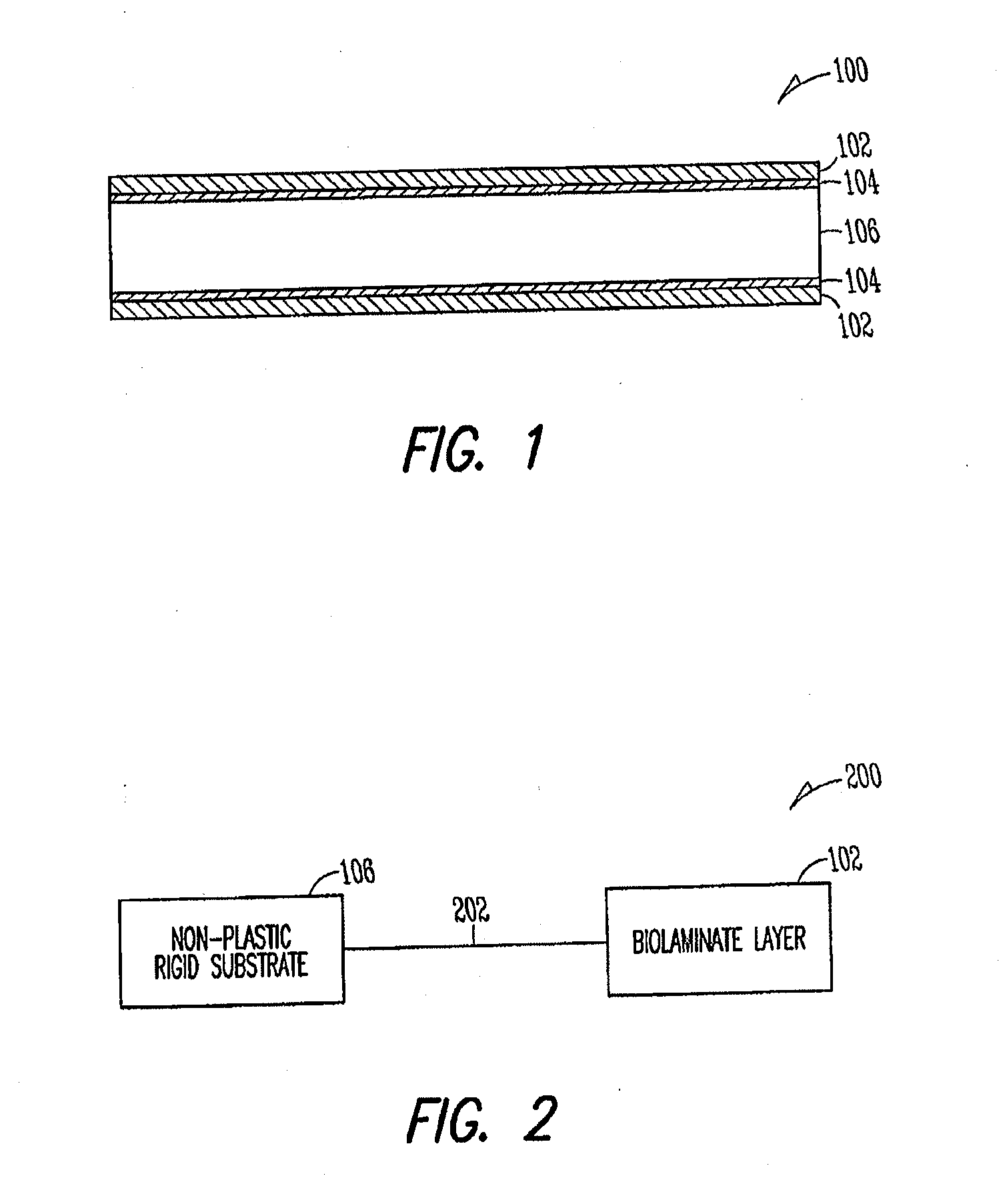Cellulosic biolaminate composite assembly and related methods
a technology of cellulosic biolaminate and composite assembly, which is applied in the direction of cellulosic plastic layered products, instruments, other domestic objects, etc., can solve the problems of insufficient flexibility or adhesion of solvent based inks, inability to refinish or refinish, and rapid wear and tear of high-pressure laminate layers
- Summary
- Abstract
- Description
- Claims
- Application Information
AI Technical Summary
Benefits of technology
Problems solved by technology
Method used
Image
Examples
example 1
[0156]PLA pellets were placed into an extruder with temperatures settings 20° F. above the melting point at 420° F. which is also recommended by Natureworks for processing temperature. The material poured out of the die like honey sticking to the die. The temperature was dropped to 310° F., over 80° F. lower than its melting point. The RPM was increased to add shear input to the material. The resultant shape held its complex shape with minimal distortion.
example 2
[0157]PLA pellets were placed into an extruder using a sheet die with processing temperatures of 380 to 420° F. and a clear sheet was produced. The sheet was brittle and easily cracked when bent. The resultant sheet was flat laminated onto a wood particleboard using a heat activated glue under heat and pressure using a hot press with temperature of 150° F. and pressures under 50 PSI. The material showed very good adhesion to the substrate.
[0158]The same sheet as above was laminated using a cold laminating method commonly used for HPL using a PVA and cold press laminating method. The PLA biolaminate sheet did not have any adhesion to the substrate and was easily pulled away.
[0159]PLA pellets were placed into a open twinscrew extruded and processing, temperatures were lowered to 320° F. and material pulled out of the extruder through the vent before the die section.
[0160]PLA was placed into an extruder and processed at temperatures below 330° F. well below the melting point using a sh...
example 3
[0172]A soybean wax was added to the PLA at 5% and extruded through a profile die. The temperature was dropped to 290° F. and the material was a smooth high integrity shaped with good melt strength sufficient to hold a profile shape. Shear was increased and the shape was improved and smoothness of surface was also improved. The hot shaped article was pulled onto a conveyor belt with no changes in shape from the die.
PUM
 Login to View More
Login to View More Abstract
Description
Claims
Application Information
 Login to View More
Login to View More - R&D
- Intellectual Property
- Life Sciences
- Materials
- Tech Scout
- Unparalleled Data Quality
- Higher Quality Content
- 60% Fewer Hallucinations
Browse by: Latest US Patents, China's latest patents, Technical Efficacy Thesaurus, Application Domain, Technology Topic, Popular Technical Reports.
© 2025 PatSnap. All rights reserved.Legal|Privacy policy|Modern Slavery Act Transparency Statement|Sitemap|About US| Contact US: help@patsnap.com



